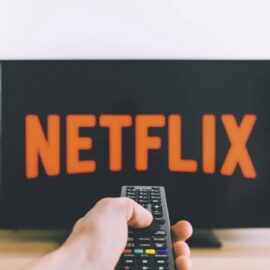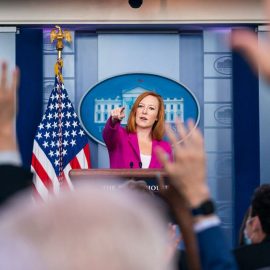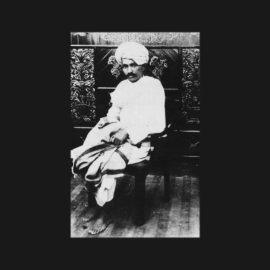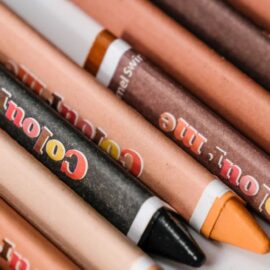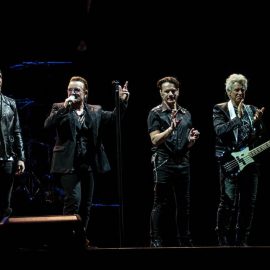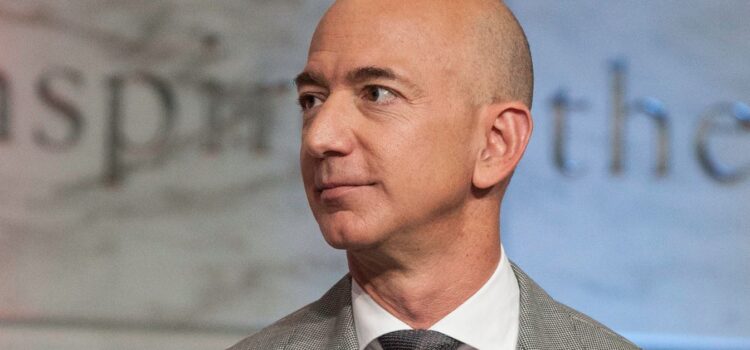
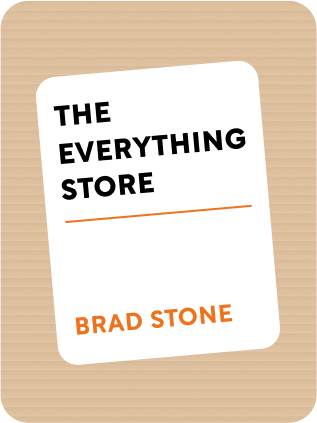
This article is an excerpt from the Shortform book guide to "The Everything Store" by Brad Stone. Shortform has the world's best summaries and analyses of books you should be reading.
Like this article? Sign up for a free trial here .
What was Jeff Bezos childhood like? Where was Jeff Bezos before Amazon?
Jeff Bezos was born in 1964 and had a messy childhood. He always stood out as a gifted student and he eventually used those gifts to take advantage of new business opportunities on the internet.
Keep reading for the timeline of Jeff Bezos’ life before he started Amazon.
Jeff Bezos Before Amazon
What was Jeff Bezos’ life before Amazon? Here is the timeline of Bezos’ life from birth up until he started his online book store called Amazon.com.
1964: Jeff Bezos is born to a circus unicycler (Ted Jorgensen, then 18) and Jacklyn Gise (then 16).
June 1965: Jacklyn Gise files for divorce after Jorgensen is unable to hold a job and is an inattentive father. She soon meets Miguel Bezos, a Cuban emigrant, working at the Bank of New Mexico.
1968: Jackie moves with Jeff and Miguel to Houston, where Miguel has a job as a petroleum engineer at Exxon. They later have two more children, Christina and Mark.
- Miguel has tireless work ethic, love for America and its opportunities, and a libertarian aversion to government intrusion.
Jeff Bezos is a standout student in a gifted program in elementary school, which receives excess mainframe computer capacity from a local company. They learn how to program.
- Jeff is fascinated with space, spurred by the Apollo11 landing and Star Trek.
- Jeff spends summers with his grandparents at a ranch in Texas, where he performs everyman jobs (castrating bulls, repairing windmills) and learns the values of self-reliance, resourcefulness, and distaste for inefficiency.
- Jeff tells his smoker grandmother that she would die earlier by 9 years. This makes her cry, and his grandfather tells him: “One day you’ll understand that it’s harder to be kind than clever.”
The family moves to Florida. His mother pushes to let Jeff into a middle school gifted program despite a usual mandatory 1-year waiting period. She also supports his dreams of becoming an inventor, taking him to Radio Shack to buy parts to build booby traps and gadgets.
- In high school in Miami, Bezos is known as “extremely disciplined” and focused. He announces that his intention to become valedictorian, and his colleagues understand the race is now who’s going to be #2. Said a classmate: “Jeff decided he wanted it and he worked harder than anybody else.”
- His curiosity and work ethic take him to a variety of jobs: at McDonald’s, breeding hamsters for a neighbor, and starting a summer school for 10-year-olds exploring science to use “new ways of thinking in old areas.”
- In his high school valedictorian speech, Bezos talks about his desire to colonize space to secure humanity’s future. Bezos attends Princeton for college.
1986: Bezos graduates from Princeton and works at Fitel, developing a transatlantic computer network for stock traders.
1989: Bezos spends a few months on a venture sending a customized newsletter to people over fax machine.
1990: Bezos joins D. E. Shaw, a finance firm started by computer science professor David E. Shaw in 1988.
- Shaw views the firm not as a hedge fund but as a technology laboratory that could apply computer science to a variety of problems. He started the firm after leaving Morgan Stanley.
Struck by the Internet
1994: Bezos notices the Web is growing fast – the number of bytes increased by 2057x fold from the previous year, outpacing other internet technologies at the time, like ftp and gopher.
- (Shortform note: the first web browser, Mosaic, was released in 1993)
- Bezos, reflecting on this period later: “Things just don’t grow that fast. It’s highly unusual, and that started me thinking, what kind of business plan might make sense in the context of that growth?”
(Shortform addition: the image that fascinated Bezos. This journal graph showed Internet protocols and their volume month by month. w, representing the world wide web, is growing exponentially and eclipsing all other protocols.)
1994: At D.E. Shaw, Bezos has been running the options trading group and its third-market business, an OTC exchange. Shaw recognizes the opportunity of the Internet and appoints Bezos to research it.
- They meet for a few hours each week to brainstorm ideas, and Bezos researches their feasibility afterward. Example ideas that they actually develop include a free email service (developed into Juno) and online stock trading (FarSight Financial, later sold to Merrill Lynch)
They also discuss the “everything store” – an intermediary between customers and manufacturers that sells every type of product worldwide, with unlimited shelf space on the Web.
- They cast predictions of the Internet’s future and how it would lead to a revolutionary shopping experience.
- Bezos envisions the ability to personalize the store to each shopper, giving it a huge advantage over brick-and-mortar retailers.
- Despite the slow current speed of the Internet, Bezos believes everyone would one day use the Internet at high speeds.
- Customers could leave reviews of any product, a more credible version of mail-order catalogues.
- The “everything store” has to start somewhere, so Bezos investigates 20 possible product categories, including software, office supplies, apparel music. He settles on books because they’re pure commodities (so customers know exactly what they’re getting without worrying about product quality), there are only a few distributors to build relationships with (eg Ingram), and there is a large catalog of over 3 million books available, far more than a Barnes & Noble retail store could ever stock, giving an online store an edge.
- Music is a close second, with a catalog too large for any brick and mortar store to stock. But Bezos worries about the concentration of power in 6 major record companies, compared to the 4,200 US book publishers who would find it difficult to gain leverage over the new store.
- They aren’t the first to come up with the idea. Multiple companies already sell books online (like Books.com). Bezos and colleagues try ordering a book. It arrives two weeks later, tattered. It’s clear to them that no one has figured out how to sell books over the Internet.
Spring 1994: Bezos tells D. E. Shaw he plans to leave to create an online bookstore. Shaw is sympathetic (given that he himself left Morgan Stanley to found his firm) but notes that Shaw might compete with Bezos in the future.
- Soon after, Bezos leaves New York for Seattle, a technology hub with a relatively small population, thus not needing to collect state sales tax. His wife MacKenzie is the company’s first accountant.
- He backs the company himself with $10,000 and adds another $84,000 in loans over the next 16 months.
- Shel Kaphan from D. E. Shaw joins Bezos as the company’s first employee and technical steward. His contract requires him to commit to buying $5,000 of stock upon joining.

———End of Preview———
Like what you just read? Read the rest of the world's best book summary and analysis of Brad Stone's "The Everything Store" at Shortform .
Here's what you'll find in our full The Everything Store summary :
- How Amazon went from an online bookstore to the largest internet retailer in the world
- What Jeff Bezos did to compete with companies like eBay, Zappos, and Diapers.com
- What it was like to work for Jeff Bezos

